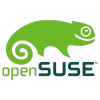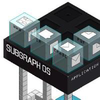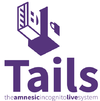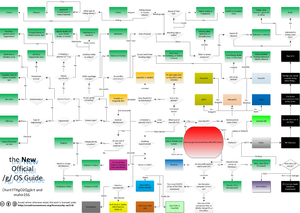We are still actively working on the spam issue.
Difference between revisions of "Babbies First Linux"
(Copies from some other wiki because the todo list said so.) |
(→CloverOS: also dead.. probably) |
||
| (155 intermediate revisions by 31 users not shown) | |||
| Line 1: | Line 1: | ||
| − | + | [[File:ospicker.png|thumb|Pick your poison]] | |
| + | {{TOCright}} | ||
| + | Being a technology board, talk of different operating systems and distributions is common. You may desire to try a new OS after reading about them. For users looking to make the switch from Windows or Mac to a Linux distribution, here are some insights about distributions in Linux, and recommendations about them. | ||
| − | |||
==Installing an OS== | ==Installing an OS== | ||
| − | It is recommended that you test out an OS in a | + | It is recommended that you test out an OS in a virtual machine such as [[VirtualBox]] or run it from a live CD/USB before installing it. This lets you test out the operating system without any permanent change to your system. You should also consider booting as a live CD to ensure good hardware compatibility. |
| − | + | There are detailed instructions available on installing [[Linux Mint]] in a [[VirtualBox]]. | |
| − | + | However, if you've decided to dedicate yourself to [[GNU/Linux]] -- getting it up and running isn't as daunting as one might think. First of all: you have to figure out what distribution you want, and what architecture your CPU has, and download the corresponding ISO. '''Do''' download it with torrent, or check the checksum after it has finished downloading. It will save you a lot of hassle if you get a corrupted ISO. There are multiple tools available for creating a Linux bootable USB from this ISO, where the most common ones are [https://unetbootin.github.io/ UNetBootin] if you're already running Linux, and [https://launchpad.net/win32-image-writer/ Win32ImageWriter] if you're on a Windows system. Boot from the USB, follow instructions. Problems? Official distribution manual, or just make a post on the [[/fglt/| Friendly GNU/Linux Thread]] on /g/ once you have searched exhaustively on Google. | |
| − | + | ==What does /g/ use?== | |
| − | + | An arch-based distro, an FSF-approved distro or a new independent distro. | |
| − | + | ==Desktop operating systems== | |
| − | + | If you are looking for an OS for daily use, try one of these. Keep in mind that most of your software and games will not work if you don't have the time to fiddle with Wine. However, most software has an equal or better FOSS replacement. Check out [http://osalt.com osalt]<sup>''Outdated (2012)''</sup> for more information on open source alternatives. | |
| − | + | ===dpkg-based distros=== | |
| − | === | + | ====Debian==== |
| + | {| border="0" cellpadding="10" cellspacing="0" | ||
| + | |- | ||
| + | | style="text-align: center;" | [[File:Debian.png|frameless|100px|link=Debian]] | ||
| + | [https://www.debian.org/ debian.org] | ||
| + | | valign="top" | | ||
| + | [[Debian]] is great for both desktops and servers. It is the base of many distros, including Ubuntu and Mint. It's also the most popular distro that doesn't contain proprietary blobs by default. GNOME is the default desktop, but several others can be chosen during installation. It comes in three variants: | ||
| + | *'''Stable''' - The production version that has a release cycle of two years. It is made by feature freezing testing for a few months as bugs are fixed and packages with too many bugs are removed; then the resulting system is released as stable. It is updated only if major security or usability fixes are incorporated. Much of its software will be outdated and won't get an update, but you can use backports. It is commonly used on servers. | ||
| + | *'''Testing''' - The preview branch that will become the next stable. The packages included in this branch have had some testing in unstable, but they may not be fit for release yet. It contains newer packages than stable, but older than unstable. This branch is updated continually until it is feature frozen. It is commonly used on desktops. | ||
| + | *'''Unstable''' - The active development version which is also called Sid. Packages are accepted without checking the distribution as a whole. This branch is usually run by developers who need the latest libraries and by those who prefer bleeding-edge software. It is not recommended unless you know what you're doing. | ||
| − | [http:// | + | After the systemd debacle in Debian, there has been a fork of Debian called [http://devuan.org/ Devuan] that aims to be minimalist, keep the Unix philosophy in mind and preserve init freedom. It is not ready for production use yet, according to the developers. |
| + | |- | ||
| + | |} | ||
| − | + | ====Ubuntu==== | |
| + | {| border="0" cellpadding="10" cellspacing="0" | ||
| + | |- | ||
| + | | style="text-align: center;" | [[File:Ubuntu.png|frameless|100px|link=Ubuntu]] | ||
| + | [http://ubuntu.com ubuntu.com] | ||
| + | | valign="top" | | ||
| + | [[Ubuntu]] is a common beginner's choice. It is based on Debian, and has been using a customised version of the GNOME desktop environment since 2018 with 18.04 LTS, as Canonical has ended their investment in Unity. The distro is generally despised by /g/ and /tech/ for their Amazon integration. However, the spyware is now disabled by default since 16.04 LTS. The learning curve is one of the lowest. It has a fairly intuitive user interface and lots of support. A polished LTS (Long Term Support) version is released every two years and supported for five years with security and performance updates. Regular versions are released every six months with bleeding-edge packages, but are only supported for nine months. Its online search feature sends data to Canonical who shares it with Amazon, but it can be turned off. If you dislike Unity you may wish to try a variant of Ubuntu. There are several [https://wiki.ubuntu.com/UbuntuFlavors official flavors] that are not commercially supported by Canonical. The most popular are: | ||
| − | * | + | *[http://xubuntu.org/ Xubuntu] uses the XFCE desktop environment. It is a semi-lightweight variant with a somewhat spartan user interface. It uses a dock similar to the one in macOS by default. |
| − | * | + | *[http://www.kubuntu.org/ Kubuntu] uses the KDE Plasma Desktop. It is much heavier on RAM, but has a nice user interface that comes with a lot of extra gadgets. Check out [https://neon.kde.org KDE neon] for the more flagship KDE support. |
| − | *[http://lubuntu. | + | *[http://lubuntu.me/ Lubuntu] uses the LXDE desktop environment. It is great for low power machines, due to its low memory usage. Use this if you want to save RAM. While LXDE is hated by many on /g/ and /tech/, most of its bad rap comes from its lackluster interface and earlier days when it was more glitchy. Users who prefer a Windows GUI may like LXDE. Check out [http://www.lxle.net LXLE] for further expansion on the idea. |
| + | *[http://ubuntu-mate.org Ubuntu MATE] uses the MATE desktop and is perfect for those who want a user interface similar to Ubuntu versions prior to 11.04. | ||
| + | *[https://ubuntubudgie.org Ubuntu Budgie] uses the Budgie desktop environment. This desktop environment is fairly new, and is simple and easy to use. It is the main DE used by the Solus GNU/Linux distribution. | ||
| − | + | Recently, it's come to controversy over it's usage of snaps. Snaps are downloaded from the proprietary Snap Store, and Ubuntu [https://wiki.installgentoo.com/images/5/52/Snap.png forces] software like Mozilla Firefox to use these snaps; some of them also exhibit performance issues and 'bloat'. | |
| + | |- | ||
| + | |} | ||
| − | Linux Mint is | + | ====Linux Mint==== |
| + | {| border="0" cellpadding="10" cellspacing="0" | ||
| + | |- | ||
| + | | style="text-align: center;" | [[File:Logo_Linux_Mint.png|frameless|100px|link=Linux Mint]] | ||
| + | [http://linuxmint.com/ linuxmint.com] | ||
| + | | valign="top" | | ||
| + | [[Linux Mint]] is based off and completely compatible with Ubuntu. The default desktop is Cinammon, but several others are available, including a light weight MATE version. Mint's Cinammon desktop is incredibly polished and user friendly. The Amazon services integration from Ubuntu is removed, but proprietary software like Flash is installed by default. Since it is based on Ubuntu LTS, its packages are a bit ancient. This is a good distribution for beginners to try before something like Debian, Arch, or Gentoo. | ||
| − | + | On 20 February 2016, [http://www.zdnet.com/article/hacker-hundreds-were-tricked-into-installing-linux-mint-backdoor/ Mint's website was compromised and backdoors were planted in the downloads], [http://blog.linuxmint.com/?p=3001? the database for Linux Mint forums were also compromised.], some [https://lwn.net/Articles/676664/ have raised concerns for this, warning people not to use Linux Mint]. | |
| − | [http:// | + | |- |
| + | |} | ||
| − | + | ====Bunsen Labs==== | |
| + | {| border="0" cellpadding="10" cellspacing="0" | ||
| + | |- | ||
| + | | style="text-align: center;" | [[File:BunsenLabs.png|frameless|100px|link=BunsenLabs]] | ||
| + | [https://www.bunsenlabs.org/ bunsenlabs.org] | ||
| + | | valign="top" | | ||
| + | [https://www.bunsenlabs.org/ Bunsen Labs] is a lightweight Debian-based distribution. It is the officially endorsed community continuation of CrunchBang since development on that project was discontinued. It is mostly aimed at experienced users, but can also be used to educate newer GNU/Linux users because of the intuitive nature of Openbox. If you're willing to learn how to edit configuration files, you may learn a little bit on the way. Overall, it's user friendly while providing convenience to more experienced users. | ||
| + | |- | ||
| + | |} | ||
| − | === | + | ===rpm-based distros=== |
| − | |||
| − | + | ====Fedora==== | |
| − | + | {| border="0" cellpadding="10" cellspacing="0" | |
| − | Fedora | + | |- |
| + | | style="text-align: center;" | [[File:Fedora-logo.png|frameless|100px|link=Fedora]] | ||
| + | [http://getfedora.org getfedora.org] | ||
| + | | valign="top" | | ||
| + | [[Fedora]] is sponsored by Red Hat and aims to be cutting edge. A new version is released every six months and each version is supported for about a year. It is almost as user friendly as Ubuntu, but with the advantage of more up to date packages and better upgrade between versions. However, its repositories are not nearly as large because it does not allow proprietary and patented software. You can add repositories quickly and easily to fix that. If you add RPM Fusion, you can have access to almost any program you will need. Also check Fedora's [https://copr.fedoraproject.org/ COPR], they work similar to PPA and are additional repositories for specific software. | ||
| − | === | + | Fedora is available in workstation, server and cloud flavors. GNOME is default in Fedora, but there are [https://spins.fedoraproject.org/ several spins] for other desktop environments. Netinstall is good for minimal installs because it lets you choose which packages you want and gets the latest versions. However, it is not recommended over a slow or unstable internet connection. |
| − | + | |- | |
| + | |} | ||
| + | ====openSUSE==== | ||
| + | {| border="0" cellpadding="10" cellspacing="0" | ||
| + | |- | ||
| + | | style="text-align: center;" | [[File:opensuse-logo.png|frameless|100px|link=openSUSE]] | ||
| + | [https://www.opensuse.org/ opensuse.org] | ||
| + | | valign="top" | | ||
| + | [[openSUSE]] is a popular community supported distribution sponsored by the German-based company SUSE. It uses GNOME by default as of recently, but other desktop environments can be chosen during installation. It includes a powerful GUI program similar in functionality to a control panel called YaST. Zypper is its package manager. OpenSUSE provides two versions with different release models, Leap and Tumbleweed. OpenSUSE Leap is a long-support distribution with its core based on commercial SUSE Linux Enterprise. Major Leap versions are supported atleast for 36 months while minor versions are released around once a year. OpenSUSE Tumbleweed is a rolling release distribution which is regularly updated with stable packages. OpenSUSE hosts the Open Build Service which is a development platform that simplifies compilation of a single package for multiple distributions including Debian, RHEL, Fedora, Mandriva, Ubuntu and all SUSE versions. | ||
| + | |- | ||
| + | |} | ||
| + | ====Mageia==== | ||
| + | {| border="0" cellpadding="10" cellspacing="0" | ||
| + | |- | ||
| + | | style="text-align: center;" | [[File:Mageia.png|frameless|100px|link=Mageia]] | ||
| + | [https://www.mageia.org/ mageia.org] | ||
| + | | valign="top" | | ||
| + | [https://www.mageia.org/ Mageia] is a fork of Mandriva Linux formed in September 2010 by former employees and contributors to the popular French Linux distribution. Unlike Mandriva, which is a commercial entity, the Mageia project is a community project and a non-profit organisation whose goal is to develop a free Linux-based operating system. | ||
| + | |- | ||
| + | |} | ||
| − | + | ===pacman-based distros=== | |
| − | Arch | + | ====Arch==== |
| + | {| border="0" cellpadding="10" cellspacing="0" | ||
| + | |- | ||
| + | | style="text-align: center;" | [[File:Arch-linux-logo.png|frameless|100px|link=Arch]] | ||
| + | [http://archlinux.org archlinux.org] | ||
| + | | valign="top" | | ||
| + | [[Arch]] is a distribution known for its KISS policy and The Arch Way. Known for its rolling release and bleeding edge packages, it uses pacman as its package manager, which is very simple to some users. A base install of Arch Linux takes less than 800MiB of disk space. It is common for ricers to use Arch because of its minimal base installation, allowing you to choose your own packages. It is also known for its wiki, which has extensive documentation of nearly everything in GNU/Linux, and the AUR (Arch User Repositories), dubbed the biggest software repository in the world. | ||
| − | + | You can also use its installer: archinstall. It installs Arch with no Antergos/Manjaro bloats and no hassle. See [https://wiki.archlinux.org/title/Archinstall] on ArchWiki. | |
| + | |- | ||
| + | |} | ||
| − | === | + | ====Manjaro==== |
| − | + | {| border="0" cellpadding="10" cellspacing="0" | |
| + | |- | ||
| + | | style="text-align: center;" | [[File:Manjaro-logo.png|frameless|100px|link=Manjaro]] | ||
| + | [https://manjaro.org manjaro.org] | ||
| + | | valign="top" | | ||
| + | [https://manjaro.org/ Manjaro] is a distribution based off Arch which can have access to the AUR. It is in many ways similar to Linux Mint. This distribution also focuses on user-friendliness. It claims the user will never have to use the terminal. Despite being Arch-based, Manjaro uses its own repository and holds back Arch's packages for a testing period. It comes with numerous tools pre-installed, similar to those in Linux Mint, from Steam to LibreOffice. Its default desktop environments are either XFCE or KDE, but there are also numerous others and pure window managers to choose from. | ||
| + | Manjaro contains a great deal of software in the default installation and its maintainers are known for [https://archive.is/JeOLo asking their users to travel back in time] and [https://forum.manjaro.org/index.php?topic=21.0 totally not being fans of Nine Inch Nails]. | ||
| + | |- | ||
| + | |} | ||
| − | === | + | ====Artix==== |
| − | |||
| − | == | ||
| − | |||
| + | Manjaro used to offer a systemd-free release which uses Gentoo's OpenRC init system. Due to complications in managing OpenRC and systemd packages in one distro, [https://forum.manjaro.org/t/manjaro-openrc-will-be-discontinued/28387 the community maintainers decided to join up] with the Arch-OpenRC project to create a new, Arch-based OpenRC distro, [https://artix-linux.github.io/ Artix Linux.] | ||
| − | === | + | ====InstantOS==== |
| − | + | ||
| + | [https://instantos.io/ InstantOS], the tiling wm distro. | ||
| + | |||
| + | ====LARBS==== | ||
| + | |||
| + | [https://larbs.xyz/ Larbs], a meta-distribution, meaning it's a set of scripts you run on a fresh install of an existing OS to give it required functionality. | ||
| + | |||
| + | ===portage-based distros=== | ||
| + | |||
| + | ====Gentoo==== | ||
| + | {| border="0" cellpadding="10" cellspacing="0" | ||
| + | |- | ||
| + | | style="text-align: center;" | [[File:Gentoo.png|frameless|100px|link=Gentoo]] | ||
| + | [http://gentoo.org gentoo.org] | ||
| + | | valign="top" | | ||
| + | [[Gentoo]] is actually not a bad choice at all. But if you make a thread asking for help expect a ton of "[[Common_Trolls_and_Copypasta#Install_Gentoo|Install Gentoo]]" responses. Gentoo, by itself, is not difficult to install, and only requires a few hours of patience and attention. Gentoo's documentation is well-annotated and easy to follow, allowing for a slightly less painful experience when configuring your system. Gentoo is also renowned for its extensive community support on IRC channels and forums, with one of the most helpful and knowledgeable communities out there supporting it. There are binary packages available in its Portage package manager, which can be automatically fetched by default when available by modifying a setting in make.conf. | ||
| + | |- | ||
| + | |} | ||
| + | |||
| + | ====Funtoo==== | ||
| + | {| border="0" cellpadding="10" cellspacing="0" | ||
| + | |- | ||
| + | | style="text-align: center;" | [[File:Funtoo.png|frameless|100px|link=Funtoo]] | ||
| + | [http://funtoo.org funtoo.org] | ||
| + | | valign="top" | | ||
| + | [http://funtoo.org Funtoo] is a Gentoo-based distribution that uses git to sync repositories. It can also be installed from the Gentoo LiveCD. It has specific `stage 3` optimized for different processor families. | ||
| + | |- | ||
| + | |} | ||
| + | ====Calculate Linux==== | ||
| + | {| border="0" cellpadding="10" cellspacing="0" | ||
| + | |- | ||
| + | | style="text-align: center;" | [[File:Calculate.png|frameless|100px|link=Calculate Linux]] | ||
| + | [http://www.calculate-linux.org calculate-linux.org] | ||
| + | | valign="top" | | ||
| + | [http://www.calculate-linux.org Calculate Linux] is a hassle-free Gentoo-based distribution (with a proper installer) that 'just werks'. It's quite literally Gentoo with sane defaults and a few extra scripts to make your life easier. Worry not, you can still compile the kernel from scratch quite easily to remove the genkernel bloat, or even remove the calculate overlay and calculate-utils entirely, to make it 100% Gentoo. | ||
| + | |- | ||
| + | |} | ||
| + | |||
| + | ====Sabayon Linux==== | ||
| + | {| border="0" cellpadding="10" cellspacing="0" | ||
| + | |- | ||
| + | | style="text-align: center;" | | ||
| + | [https://www.sabayon.org/ Sabayon.org] | ||
| + | | valign="top" | | ||
| + | [https://www.sabayon.org/ Sabayon Linux] is kinda like Calculate, but shit, and it's also not made by ruskies. | ||
| + | |- | ||
| + | |} | ||
| + | |||
| + | ===Independent distributions=== | ||
| + | Distributions that do not fit inside a category will be added here until an appropriate category is made. | ||
| + | |||
| + | ====Alpine Linux==== | ||
| + | {| border="0" cellpadding="10" cellspacing="0" | ||
| + | |- | ||
| + | | style="text-align: center;" | [[File:AlpineLinux.png|frameless|100px|link=AlpineLinux]] | ||
| + | [http://alpinelinux.org/ alpinelinux.org] | ||
| + | | valign="top" | | ||
| + | [http://alpinelinux.org Alpine Linux] is a mostly GNU-free Linux distribution using musl-libc and busybox instead of your usual GNU utilities. It is primarily designed for "power users who appreciate security, simplicity and resource efficiency" and, as such, uses OpenRC, as well as PaX and grsecurity patches in the default kernel. All user space binaries are compiled as position-independent executables with stack-smashing protection, more commonly known as 'hardened'. | ||
| + | |- | ||
| + | |} | ||
| + | |||
| + | ====CRUX==== | ||
| + | {| border="0" cellpadding="10" cellspacing="0" | ||
| + | |- | ||
| + | | style="text-align: center;" | [[File:Cruxlogo.png|frameless|100px|link=CRUX]] | ||
| + | [https://crux.nu/ crux.nu] | ||
| + | | valign="top" | | ||
| + | [https://crux.nu/ CRUX] is a lightweight distribution aimed at experienced Linux users. It uses a "keep it simple" philosophy with BSD-style init scripts and tar.gz-based package system. | ||
| + | |- | ||
| + | |} | ||
| + | |||
| + | ====NixOS==== | ||
| + | {| border="0" cellpadding="10" cellspacing="0" | ||
| + | |- | ||
| + | | style="text-align: center;" | [[File:nixos.png|frameless|100px|link=NixOS]] | ||
| + | [https://nixos.org/ nixos.org] | ||
| + | | valign="top" | | ||
| + | [https://nixos.org/ NixOS] is an independently developed Linux distribution that aims to improve the state of the art in system configuration management. Built on top of the Nix package manager, it uses declarative configuration and allows reliable system upgrades. Two main branches are offered: current Stable release and Unstable following latest development. | ||
| + | |- | ||
| + | |} | ||
| + | |||
| + | ====Puppy Linux==== | ||
| + | {| border="0" cellpadding="10" cellspacing="0" | ||
| + | |- | ||
| + | | style="text-align: center;" | [[File:PuppyLinux.png|frameless|100px|link=PuppyLinux]] | ||
| + | [http://puppylinux.org puppylinux.org] | ||
| + | | valign="top" | | ||
| + | [http://puppylinux.org Puppy] is a distribution aimed at being lightweight, fast, easy and portable. Puppy Linux can be run entirely from RAM. It is meant to be booted from a CD or USB as opposed to being installed. Variations such as Racy Puppy exist. | ||
| + | |- | ||
| + | |} | ||
| + | |||
| + | ====Slackware==== | ||
| + | {| border="0" cellpadding="10" cellspacing="0" | ||
| + | |- | ||
| + | | style="text-align: center;" | [[File:Slwr.jpg|frameless|100px|link=Slackware]] | ||
| + | [http://slackware.com slackware.com] | ||
| + | | valign="top" | | ||
| + | [[Slackware]] is a Linux distribution created by Patrick Volkerding in 1993. Originally based on Softlanding Linux System, Slackware has been the basis for many other Linux distributions, most notably the first versions of SUSE Linux, and is the oldest currently being maintained. Slackware aims for design stability and simplicity and to be the most "Unix-like" Linux distribution. It makes as few modifications as possible to software packages from upstream and tries not to anticipate use cases or preclude user decisions. In contrast to most modern Linux distributions, Slackware provides no GUI installation procedure and no automatic dependency resolution of software packages. It uses plain text files and only a small set of shell scripts for configuration and administration. Without further modification it boots into a CLI environment. | ||
| + | |||
| + | There is no formal issue tracking system and no official procedure to become a code contributor or developer. The project does not maintain a public code repository. Bug reports and contributions, while being essential to the project, are managed in an informal way. All the final decisions about what is going to be included in a Slackware release strictly remain with Slackware's benevolent dictator for life, Patrick Volkerding. | ||
| + | |- | ||
| + | |} | ||
| + | |||
| + | ====Void Linux==== | ||
| + | {| border="0" cellpadding="10" cellspacing="0" | ||
| + | |- | ||
| + | | style="text-align: center;" | [[File:VoidLinux.png|frameless|100px|link=VoidLinux]] | ||
| + | [http://voidlinux.org voidlinux.org] | ||
| + | | valign="top" | | ||
| + | [http://voidlinux.org Void Linux] is a Linux distribution utilizing the [[Package manager#xbps|xbps]] package manager. Although in some ways similar to Arch, it uses runit as its init instead of systemd or Gentoo's OpenRC. It also has the availability of an x86_64-musl port with the musl C library. | ||
| + | |- | ||
| + | |} | ||
| + | |||
| + | ===FSF-approved distributions=== | ||
| + | |||
| + | The [[Free Software Foundation]] maintains its own list of GNU/Linux distributions which are comprised entirely of free software. You can check which distributions the FSF endorses [http://www.gnu.org/distros/free-distros.en.html here]. Note several distributions which were previously on this list (including Debian and Gentoo) have been removed for various reasons. The FSF also lists its reasons for not endorsing specific distributions [https://www.gnu.org/distros/common-distros.html here]. | ||
==Servers== | ==Servers== | ||
| − | You may be interested in Linux as a server as opposed to a desktop. While less | + | {{stub}} |
| − | === | + | You may be interested in GNU/Linux as a server as opposed to a desktop. While less often asked about, it is still quite common. |
| − | [ | + | |
| − | === | + | Many distributions have a separate server release in addition to their desktop one. The main difference is server releases usually have no desktop environment or bloat applications preinstalled. This means the initial setup might need to be done via the command line. |
| + | |||
| + | *[[#Debian|Debian Stable]] is one of the best operating systems to use for a server. It is not too hard to manage, but at the same time customizable enough for your server's purposes. | ||
| + | *[[#Ubuntu|Ubuntu Server]] is based on Debian testing. While this means it does have the slight chance of being not as stable as Debian Stable, it still is a great choice for a server. Recent LTS releases have focused on providing heavy integration with Openstack, providing an out of the box turnkey solution to run an OpenStack Icehouse environment in a public, private, or hybrid cloud. | ||
| + | *[[#Fedora|Fedora Server]] has a short life cycle and more up to date packages. | ||
| + | |||
| + | ====CentOS==== | ||
| + | {| border="0" cellpadding="10" cellspacing="0" | ||
| + | |- | ||
| + | | style="text-align: center;" | [[File:Centos-logo.png|frameless|100px|link=CentOS]] | ||
| + | [https://centos.org/ centos.org] | ||
| + | | valign="top" | | ||
| + | [https://centos.org/ CentOS] is recompiled directly from Red Hat Enterprise Linux source code. It is basically a free community supported version of RHEL. The project is officially joined with Red Hat, but remains under an independent CentOS governing board. Many of the developers are employed by Red Hat, but it also relies on donations and sponsors. | ||
| + | |||
| + | Its packages are stable and old, so it is better suited to servers than desktops. Like Fedora and other RedHat backed distributions, it only has free software in its repositories. For more options you need to add additional repositories like RepoForge. CentOS is now deprecated in favor of CentOS Stream which is between the Fedora Project and RHEL in the RHEL Development process, providing a "rolling preview" of future RHEL kernels and features | ||
| + | |- | ||
| + | |} | ||
| + | |||
| + | ==Security-focused== | ||
| + | ===Qubes OS=== | ||
| + | {| border="0" cellpadding="10" cellspacing="0" | ||
| + | |- | ||
| + | | style="text-align: center;" | [[File:Qubes-logo.png|frameless|100px]] | ||
| + | [https://qubes-os.org qubes-os.org] | ||
| + | | valign="top" | | ||
| + | [http://qubes-os.org Qubes OS] is a security-focused RPM-based distribution that aims to provide security through isolation. Virtualization is performed by Xen, and requires IOMMU/VT-d. | ||
| + | |- | ||
| + | |} | ||
| + | |||
| + | ===Subgraph OS=== | ||
| + | {| border="0" cellpadding="10" cellspacing="0" | ||
| + | |- | ||
| + | | style="text-align: center;" | [[File:Subgraph-logo.png|frameless|100px]] | ||
| + | [https://subgraph.com subgraph.com] | ||
| + | | valign="top" | | ||
| + | [https://subgraph.com Subgraph OS] is an operating system made by the Subgraph security company that focuses on security by encrypting the filesystem by default, creating sandboxed containers using [https://github.com/subgraph/oz OZ] (similar to [[List of recommended GNU/Linux software#Sandboxes|firejail]]) around at-risk software. The sandbox system enforces Seccomp filters, Linux Namespaces, Capabilities, and even isolates X11 using XPRA. It ships with a Linux kernel hardened with Grsecurity. | ||
| + | |- | ||
| + | |} | ||
| − | + | ===Tails=== | |
| + | {| border="0" cellpadding="10" cellspacing="0" | ||
| + | |- | ||
| + | | style="text-align: center;" | [[File:Tails-logo.png|frameless|100px]] | ||
| + | [https://tails.boum.org tails.boum.org] | ||
| + | | valign="top" | | ||
| + | [https://tails.boum.org/ Tails] is a live system that aims to preserve your privacy and anonymity. It helps you to use the internet anonymously and circumvent censorship almost anywhere you go. It can be used on any computer without leaving a trace unless you explicitly ask it to. It is used by Edward Snowden. | ||
| + | |- | ||
| + | |} | ||
| − | === | + | ===Whonix=== |
| − | + | {| border="0" cellpadding="10" cellspacing="0" | |
| + | |- | ||
| + | | style="text-align: center;" | [[File:Whonix-logo.png|frameless|100px]] | ||
| + | [https://www.whonix.org whonix.org] | ||
| + | | valign="top" | | ||
| + | [https://www.whonix.org/ Whonix] is based on Debian GNU/Linux and Tor with a focus on anonymity, privacy and security. It is designed to be used inside a host OS. | ||
| + | |- | ||
| + | |} | ||
| − | + | ==Specialist distributions== | |
| − | + | Some distributions serve other purposes like scanning for malware, data forensics, penetration testing and more. | |
| + | *[http://gparted.sourceforge.net/ GParted] is a live distribution aimed at helping users partition their disks. | ||
| + | *[http://www.ipredia.org/ iPredia] is a Debian based distribution designed for i2p users. This has many i2p applications included such as Robert torrent client and iMule. | ||
| + | *[http://www.kali.org/ Kali] is a Ubuntu-based distribution aimed at penetration testing. | ||
| − | == | + | ==External links== |
| − | + | * http://distrowatch.com/ | |
| − | + | * https://distrochooser.de/?l=2 | |
| − | * | ||
| − | * | ||
| − | |||
| − | |||
| − | + | [[Category:GNU/Linux]] | |
| − | + | [[Category:Recommendations]] | |
| + | [[Category:HowTo]] | ||
| + | [[Category:What does /g/ use?]] | ||
Revision as of 03:49, 13 July 2022
Contents
Being a technology board, talk of different operating systems and distributions is common. You may desire to try a new OS after reading about them. For users looking to make the switch from Windows or Mac to a Linux distribution, here are some insights about distributions in Linux, and recommendations about them.
Installing an OS
It is recommended that you test out an OS in a virtual machine such as VirtualBox or run it from a live CD/USB before installing it. This lets you test out the operating system without any permanent change to your system. You should also consider booting as a live CD to ensure good hardware compatibility.
There are detailed instructions available on installing Linux Mint in a VirtualBox.
However, if you've decided to dedicate yourself to GNU/Linux -- getting it up and running isn't as daunting as one might think. First of all: you have to figure out what distribution you want, and what architecture your CPU has, and download the corresponding ISO. Do download it with torrent, or check the checksum after it has finished downloading. It will save you a lot of hassle if you get a corrupted ISO. There are multiple tools available for creating a Linux bootable USB from this ISO, where the most common ones are UNetBootin if you're already running Linux, and Win32ImageWriter if you're on a Windows system. Boot from the USB, follow instructions. Problems? Official distribution manual, or just make a post on the Friendly GNU/Linux Thread on /g/ once you have searched exhaustively on Google.
What does /g/ use?
An arch-based distro, an FSF-approved distro or a new independent distro.
Desktop operating systems
If you are looking for an OS for daily use, try one of these. Keep in mind that most of your software and games will not work if you don't have the time to fiddle with Wine. However, most software has an equal or better FOSS replacement. Check out osaltOutdated (2012) for more information on open source alternatives.
dpkg-based distros
Debian

|
Debian is great for both desktops and servers. It is the base of many distros, including Ubuntu and Mint. It's also the most popular distro that doesn't contain proprietary blobs by default. GNOME is the default desktop, but several others can be chosen during installation. It comes in three variants:
After the systemd debacle in Debian, there has been a fork of Debian called Devuan that aims to be minimalist, keep the Unix philosophy in mind and preserve init freedom. It is not ready for production use yet, according to the developers. |
Ubuntu

|
Ubuntu is a common beginner's choice. It is based on Debian, and has been using a customised version of the GNOME desktop environment since 2018 with 18.04 LTS, as Canonical has ended their investment in Unity. The distro is generally despised by /g/ and /tech/ for their Amazon integration. However, the spyware is now disabled by default since 16.04 LTS. The learning curve is one of the lowest. It has a fairly intuitive user interface and lots of support. A polished LTS (Long Term Support) version is released every two years and supported for five years with security and performance updates. Regular versions are released every six months with bleeding-edge packages, but are only supported for nine months. Its online search feature sends data to Canonical who shares it with Amazon, but it can be turned off. If you dislike Unity you may wish to try a variant of Ubuntu. There are several official flavors that are not commercially supported by Canonical. The most popular are:
Recently, it's come to controversy over it's usage of snaps. Snaps are downloaded from the proprietary Snap Store, and Ubuntu forces software like Mozilla Firefox to use these snaps; some of them also exhibit performance issues and 'bloat'. |
Linux Mint

|
Linux Mint is based off and completely compatible with Ubuntu. The default desktop is Cinammon, but several others are available, including a light weight MATE version. Mint's Cinammon desktop is incredibly polished and user friendly. The Amazon services integration from Ubuntu is removed, but proprietary software like Flash is installed by default. Since it is based on Ubuntu LTS, its packages are a bit ancient. This is a good distribution for beginners to try before something like Debian, Arch, or Gentoo. On 20 February 2016, Mint's website was compromised and backdoors were planted in the downloads, the database for Linux Mint forums were also compromised., some have raised concerns for this, warning people not to use Linux Mint. |
Bunsen Labs

|
Bunsen Labs is a lightweight Debian-based distribution. It is the officially endorsed community continuation of CrunchBang since development on that project was discontinued. It is mostly aimed at experienced users, but can also be used to educate newer GNU/Linux users because of the intuitive nature of Openbox. If you're willing to learn how to edit configuration files, you may learn a little bit on the way. Overall, it's user friendly while providing convenience to more experienced users. |
rpm-based distros
Fedora

|
Fedora is sponsored by Red Hat and aims to be cutting edge. A new version is released every six months and each version is supported for about a year. It is almost as user friendly as Ubuntu, but with the advantage of more up to date packages and better upgrade between versions. However, its repositories are not nearly as large because it does not allow proprietary and patented software. You can add repositories quickly and easily to fix that. If you add RPM Fusion, you can have access to almost any program you will need. Also check Fedora's COPR, they work similar to PPA and are additional repositories for specific software. Fedora is available in workstation, server and cloud flavors. GNOME is default in Fedora, but there are several spins for other desktop environments. Netinstall is good for minimal installs because it lets you choose which packages you want and gets the latest versions. However, it is not recommended over a slow or unstable internet connection. |
openSUSE

|
openSUSE is a popular community supported distribution sponsored by the German-based company SUSE. It uses GNOME by default as of recently, but other desktop environments can be chosen during installation. It includes a powerful GUI program similar in functionality to a control panel called YaST. Zypper is its package manager. OpenSUSE provides two versions with different release models, Leap and Tumbleweed. OpenSUSE Leap is a long-support distribution with its core based on commercial SUSE Linux Enterprise. Major Leap versions are supported atleast for 36 months while minor versions are released around once a year. OpenSUSE Tumbleweed is a rolling release distribution which is regularly updated with stable packages. OpenSUSE hosts the Open Build Service which is a development platform that simplifies compilation of a single package for multiple distributions including Debian, RHEL, Fedora, Mandriva, Ubuntu and all SUSE versions. |
Mageia

|
Mageia is a fork of Mandriva Linux formed in September 2010 by former employees and contributors to the popular French Linux distribution. Unlike Mandriva, which is a commercial entity, the Mageia project is a community project and a non-profit organisation whose goal is to develop a free Linux-based operating system. |
pacman-based distros
Arch

|
Arch is a distribution known for its KISS policy and The Arch Way. Known for its rolling release and bleeding edge packages, it uses pacman as its package manager, which is very simple to some users. A base install of Arch Linux takes less than 800MiB of disk space. It is common for ricers to use Arch because of its minimal base installation, allowing you to choose your own packages. It is also known for its wiki, which has extensive documentation of nearly everything in GNU/Linux, and the AUR (Arch User Repositories), dubbed the biggest software repository in the world. You can also use its installer: archinstall. It installs Arch with no Antergos/Manjaro bloats and no hassle. See [1] on ArchWiki. |
Manjaro

|
Manjaro is a distribution based off Arch which can have access to the AUR. It is in many ways similar to Linux Mint. This distribution also focuses on user-friendliness. It claims the user will never have to use the terminal. Despite being Arch-based, Manjaro uses its own repository and holds back Arch's packages for a testing period. It comes with numerous tools pre-installed, similar to those in Linux Mint, from Steam to LibreOffice. Its default desktop environments are either XFCE or KDE, but there are also numerous others and pure window managers to choose from. Manjaro contains a great deal of software in the default installation and its maintainers are known for asking their users to travel back in time and totally not being fans of Nine Inch Nails. |
Artix
Manjaro used to offer a systemd-free release which uses Gentoo's OpenRC init system. Due to complications in managing OpenRC and systemd packages in one distro, the community maintainers decided to join up with the Arch-OpenRC project to create a new, Arch-based OpenRC distro, Artix Linux.
InstantOS
InstantOS, the tiling wm distro.
LARBS
Larbs, a meta-distribution, meaning it's a set of scripts you run on a fresh install of an existing OS to give it required functionality.
portage-based distros
Gentoo

|
Gentoo is actually not a bad choice at all. But if you make a thread asking for help expect a ton of "Install Gentoo" responses. Gentoo, by itself, is not difficult to install, and only requires a few hours of patience and attention. Gentoo's documentation is well-annotated and easy to follow, allowing for a slightly less painful experience when configuring your system. Gentoo is also renowned for its extensive community support on IRC channels and forums, with one of the most helpful and knowledgeable communities out there supporting it. There are binary packages available in its Portage package manager, which can be automatically fetched by default when available by modifying a setting in make.conf. |
Funtoo

|
Funtoo is a Gentoo-based distribution that uses git to sync repositories. It can also be installed from the Gentoo LiveCD. It has specific `stage 3` optimized for different processor families. |
Calculate Linux

|
Calculate Linux is a hassle-free Gentoo-based distribution (with a proper installer) that 'just werks'. It's quite literally Gentoo with sane defaults and a few extra scripts to make your life easier. Worry not, you can still compile the kernel from scratch quite easily to remove the genkernel bloat, or even remove the calculate overlay and calculate-utils entirely, to make it 100% Gentoo. |
Sabayon Linux
|
Sabayon Linux is kinda like Calculate, but shit, and it's also not made by ruskies. |
Independent distributions
Distributions that do not fit inside a category will be added here until an appropriate category is made.
Alpine Linux

|
Alpine Linux is a mostly GNU-free Linux distribution using musl-libc and busybox instead of your usual GNU utilities. It is primarily designed for "power users who appreciate security, simplicity and resource efficiency" and, as such, uses OpenRC, as well as PaX and grsecurity patches in the default kernel. All user space binaries are compiled as position-independent executables with stack-smashing protection, more commonly known as 'hardened'. |
CRUX
|
CRUX is a lightweight distribution aimed at experienced Linux users. It uses a "keep it simple" philosophy with BSD-style init scripts and tar.gz-based package system. |
NixOS

|
NixOS is an independently developed Linux distribution that aims to improve the state of the art in system configuration management. Built on top of the Nix package manager, it uses declarative configuration and allows reliable system upgrades. Two main branches are offered: current Stable release and Unstable following latest development. |
Puppy Linux

|
Puppy is a distribution aimed at being lightweight, fast, easy and portable. Puppy Linux can be run entirely from RAM. It is meant to be booted from a CD or USB as opposed to being installed. Variations such as Racy Puppy exist. |
Slackware

|
Slackware is a Linux distribution created by Patrick Volkerding in 1993. Originally based on Softlanding Linux System, Slackware has been the basis for many other Linux distributions, most notably the first versions of SUSE Linux, and is the oldest currently being maintained. Slackware aims for design stability and simplicity and to be the most "Unix-like" Linux distribution. It makes as few modifications as possible to software packages from upstream and tries not to anticipate use cases or preclude user decisions. In contrast to most modern Linux distributions, Slackware provides no GUI installation procedure and no automatic dependency resolution of software packages. It uses plain text files and only a small set of shell scripts for configuration and administration. Without further modification it boots into a CLI environment. There is no formal issue tracking system and no official procedure to become a code contributor or developer. The project does not maintain a public code repository. Bug reports and contributions, while being essential to the project, are managed in an informal way. All the final decisions about what is going to be included in a Slackware release strictly remain with Slackware's benevolent dictator for life, Patrick Volkerding. |
Void Linux

|
Void Linux is a Linux distribution utilizing the xbps package manager. Although in some ways similar to Arch, it uses runit as its init instead of systemd or Gentoo's OpenRC. It also has the availability of an x86_64-musl port with the musl C library. |
FSF-approved distributions
The Free Software Foundation maintains its own list of GNU/Linux distributions which are comprised entirely of free software. You can check which distributions the FSF endorses here. Note several distributions which were previously on this list (including Debian and Gentoo) have been removed for various reasons. The FSF also lists its reasons for not endorsing specific distributions here.
Servers
You may be interested in GNU/Linux as a server as opposed to a desktop. While less often asked about, it is still quite common.
Many distributions have a separate server release in addition to their desktop one. The main difference is server releases usually have no desktop environment or bloat applications preinstalled. This means the initial setup might need to be done via the command line.
- Debian Stable is one of the best operating systems to use for a server. It is not too hard to manage, but at the same time customizable enough for your server's purposes.
- Ubuntu Server is based on Debian testing. While this means it does have the slight chance of being not as stable as Debian Stable, it still is a great choice for a server. Recent LTS releases have focused on providing heavy integration with Openstack, providing an out of the box turnkey solution to run an OpenStack Icehouse environment in a public, private, or hybrid cloud.
- Fedora Server has a short life cycle and more up to date packages.
CentOS

|
CentOS is recompiled directly from Red Hat Enterprise Linux source code. It is basically a free community supported version of RHEL. The project is officially joined with Red Hat, but remains under an independent CentOS governing board. Many of the developers are employed by Red Hat, but it also relies on donations and sponsors. Its packages are stable and old, so it is better suited to servers than desktops. Like Fedora and other RedHat backed distributions, it only has free software in its repositories. For more options you need to add additional repositories like RepoForge. CentOS is now deprecated in favor of CentOS Stream which is between the Fedora Project and RHEL in the RHEL Development process, providing a "rolling preview" of future RHEL kernels and features |
Security-focused
Qubes OS

|
Qubes OS is a security-focused RPM-based distribution that aims to provide security through isolation. Virtualization is performed by Xen, and requires IOMMU/VT-d. |
Subgraph OS

|
Subgraph OS is an operating system made by the Subgraph security company that focuses on security by encrypting the filesystem by default, creating sandboxed containers using OZ (similar to firejail) around at-risk software. The sandbox system enforces Seccomp filters, Linux Namespaces, Capabilities, and even isolates X11 using XPRA. It ships with a Linux kernel hardened with Grsecurity. |
Tails

|
Tails is a live system that aims to preserve your privacy and anonymity. It helps you to use the internet anonymously and circumvent censorship almost anywhere you go. It can be used on any computer without leaving a trace unless you explicitly ask it to. It is used by Edward Snowden. |
Whonix

|
Whonix is based on Debian GNU/Linux and Tor with a focus on anonymity, privacy and security. It is designed to be used inside a host OS. |
Specialist distributions
Some distributions serve other purposes like scanning for malware, data forensics, penetration testing and more.
- GParted is a live distribution aimed at helping users partition their disks.
- iPredia is a Debian based distribution designed for i2p users. This has many i2p applications included such as Robert torrent client and iMule.
- Kali is a Ubuntu-based distribution aimed at penetration testing.
